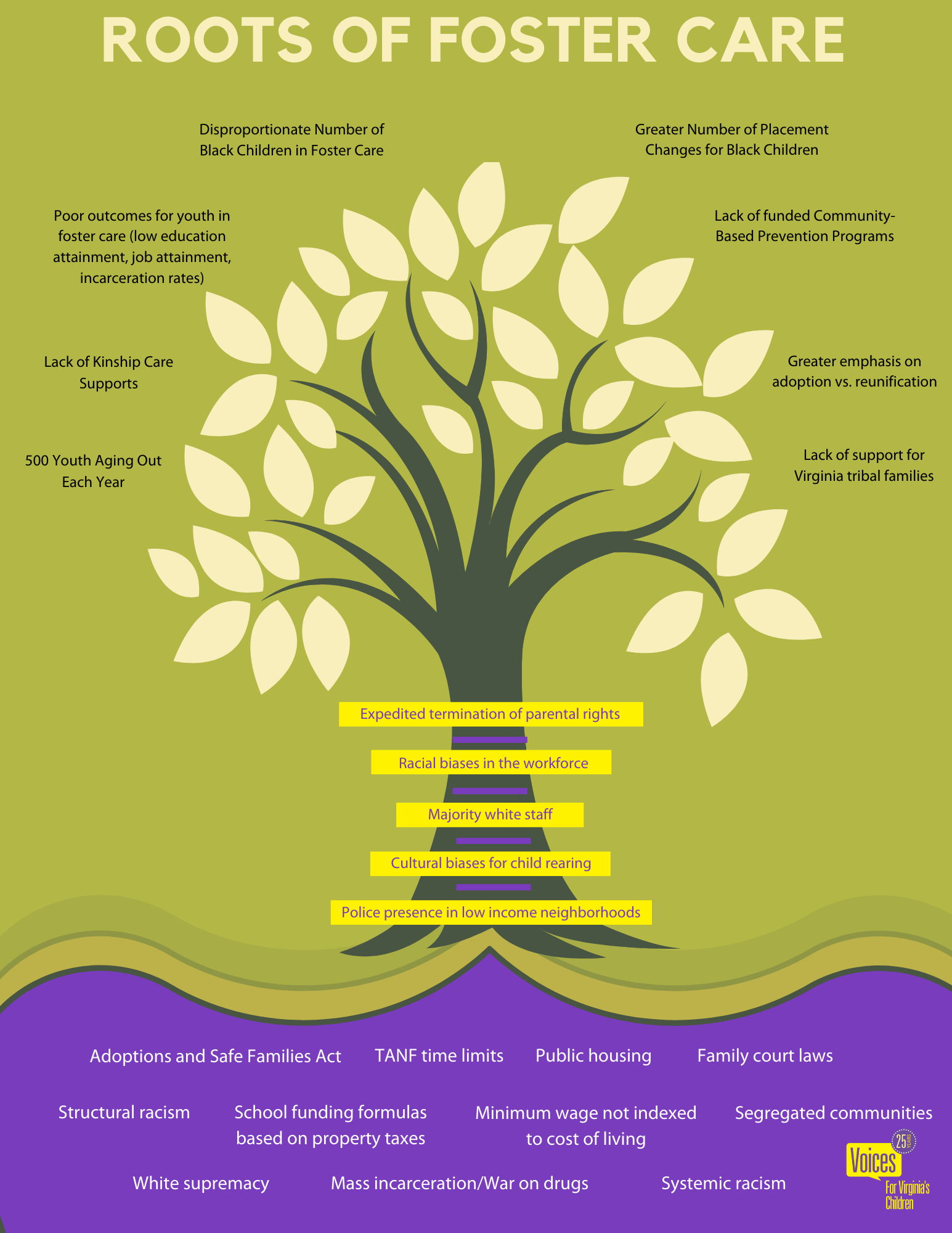Discussion explores systemic racism, disproportionality, equity in child welfare
The VCU School of Social Work and its Child Welfare Stipend Program hosted a panel discussion, Systemic Racism, Disproportionality, and Equity in Child Welfare: Our History and Where to Focus Our Change Efforts? Nov. 10, 2020.
- See the March 2021 panel Systemic Racism and Equity in Child Welfare: The Role of Social Work Education in Perpetuating and Challenging Inequities.
The panel session, available for viewing through the YouTube archive above, featured three alumni working in the field:
- Danika Briggs (M.S.W.’03/SW), assistant director, Chesterfield-Colonial Heights Department of Social Services
- Allison Gilbreath (B.S.’11/GPA; M.S.W.’16/SW), policy analyst [policy and program director], Voices for Virginia’s Children
- Kristin Zagar (M.S.W.’03/SW), director, Division of Family Services, Virginia Department of Social Services
Resource list
Books
Roberts, D. (2002). Shattered bonds : The color of child welfare. ProQuest Ebook Central. *This book is available free online through the VCU Library
Websites
- Annie E. Casey Foundation
- Casey Family Programs
- Center for the Study of Social Policy
- Kids Count Data Center
- Social Work Policy Institute
- The Harvard Implicit Bias study
- The National Child Welfare Workforce Institute
- The UpEnd Movement
- The Urban Institute
- Voices for Virginia Children
Articles
- Achieving Racial Equity: Calling the Social Work Profession to Action
- Addressing Systemic Racism in Our Child Welfare System
- Advocating for Improvements to Child Welfare in Special Session
- “Invest in Families Instead”: A Renewed Call to Divest the Child Welfare System
- Social Work, White Supremacy, and Racial Justice: Reckoning with our History, Interrogating the Present, and Reimagining Our Future
Graphics
Illustrating Disparity in Virginia

Data source: state submitted AFCARS files 2019 / Casey Family Programs. For more information: [email protected].
Roots of foster care

Source: Voices for Virginia’s Children. For more information: [email protected].
Categories Alumni, Community, Students